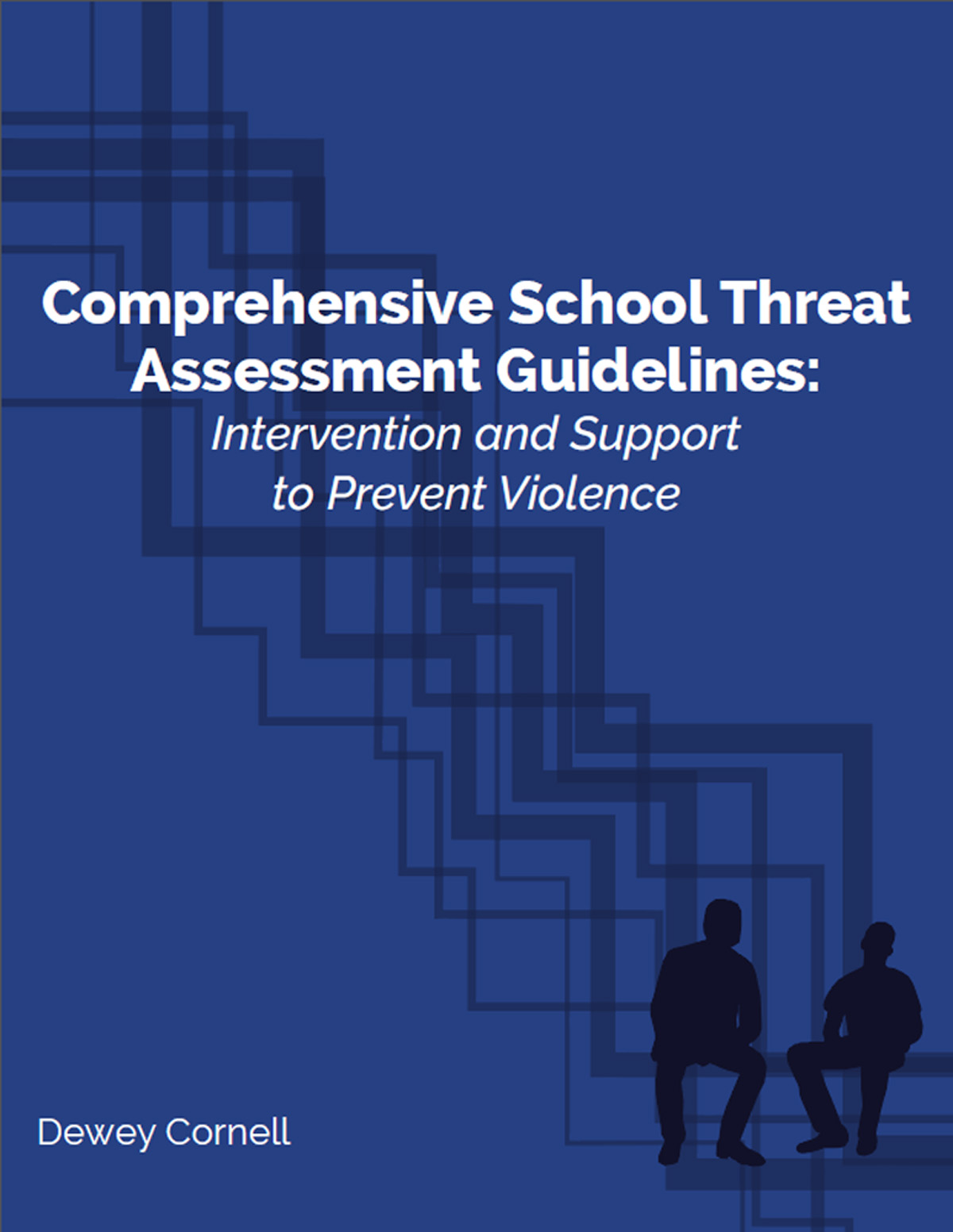Our original manual, Guidelines for Responding to Student Threats of Violence, was updated with a new manual, Comprehensive School Threat Assessment Guidelines in 2018. The new manual is available on Amazon. Or purchase it directly from us with a purchase order emailed to Lindsay@schoolta.com. With a direct purchase, the manuals are $50 each, which includes shipping and handling. A 10% discount is available for purchases of 20+.
Our 2018 threat assessment manual replaces the original 2006 manual, Guidelines for Responding to Student Threats of Violence
Comprehensive School Threat Assessment Guidelines
One of the strengths of the Virginia Student Threat Assessment Guidelines is our 156-page manual that explains in detail how to conduct a student threat assessment. This manual was based on substantial research, field-testing, and input from education practitioners and experts in violence prevention. With 12 chapters, this manual explains the rationale for threat assessment, how the team functions, and what steps to follow in conducting an assessment. A key feature of the manual is a 5-step decision tree that allows teams to resolve most non-serious, transient threats in 2 steps and then reserves more extensive assessment and intervention for more serious, substantive threats.
The manual covers the mental health assessment of a student who poses a very serious substantive threat, the main pathways to violence that must be considered, and intervention strategies to help troubled students and prevent their conflicts and problems from escalating into violence. The new manual includes a chapter on using the guidelines for threats made by adults such as parents and staff.
The manual includes helpful forms for carrying out and documenting a threat assessment and initiating behavior support plans. All forms are freely available for copying.
Read kudos for the Original manual from leading experts and practitioners by clicking here.
A key feature of the manual is a 5-step decision tree that allows teams to resolve most non-serious, transient threats in 2 steps and then reserves more extensive assessment and intervention for more serious, substantive threats. The forms used for this model are freely available to you here.
A threat assessment begins when a threat is reported to the principal or any other member of the school's threat assessment team. The assessment begins with a triage process to determine whether the threat can be quickly and easily resolved as a transient threat that does not pose a serious threat of violence (most cases) or will require more extensive assessment and intervention as a substantive threat. Transient threats are often statements that do not express a serious intent to harm someone, and can range from joking comments to momentary expressions of frustration. Transient threats are usually resolved when a student calms down and apologizes. The manual contains a chapter on transient threats with numerous examples of how these kinds of cases are resolved. Equally important, we have extensive research showing that these cases ARE resolved without violence and without disciplinary over-reaction to the student's misbehavior.
Substantive threats are by definition threats where there is a serious intent to harm someone. Substantive threats are divided into serious substantive threats involving a fight or assault and very serious substantive threats that involve a threat to kill, rape, or use a weapon to inflict severe injury. In cases of very serious substantive threats, the team will want to conduct a mental health assessment of the student and consult with law enforcement. Fewer than 10% of threats rise to this level. The manual spells out the kinds of protective actions that schools should take, including the notification of threatened individuals. There is also a detailed description of how a safety plan can be formulated, documented, and implemented to prevent violence. The manual includes numerous case examples and explains the actions that school teams should consider. Our research shows that school teams can reliably distinguish substantive threats from transient threats and take appropriate action to prevent violence from taking place.
The original VSTAG manual, no longer available
The original 7-step decision tree can still be used, but the new decision tree has a more streamlined look.
Back cover of new manual




